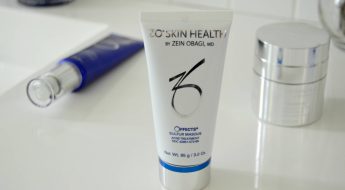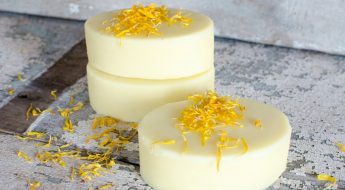
There is probably no person in the world who would have positive associations with the wors sebum. Its excess is expressed by unsightly skin shining – do you know it? Unfortunately, I do. Sebum is produced by sebaceous glands located on the whole surface of the skin except the inner side of the hands and feet. Some parts of the skin are equipped with a larger number of glands than others, so the sebum is not secreted evenly over the entire body surface. Where is the largest amount of sebaceous glands located and what are their types? Is sebum needed and what affects its quantity? What are the effects of excessive sebum secretion? How does the secretion of sebum affect the type of skin and how to reduce it?
Where is the largest number of sebaceous glands located and what are their types?
The most sebaceous glands are found on the skull, face, back and chest, and the least on the forearms and legs.
One of the groups of sebaceous glands occurs independently of the hair, i.e. in places such as lips, navels, and nipples. The remaining glands are found near the hair follicles singly or in groups. Both types belong to the holocrine glands, that is, in which the cells turn into a secretion, they detach from the epithelium and come out on top.
Is sebum necessary?
Sebum creates a hydro-lipid coating for the skin which plays the role of a natural protective barrier. If it wasn’t for it, our skin would constantly be exposed to various adverse external factors.
The skin is able to produce up to 11 kg sebum per year, therefore, its main task is to shield it against external factors, such as bacteria, viruses, fungi and well as UV radiation, temperature changes, chemical substances, and mechanical damage. Skin that lacks sebum becomes dull, wrinkled, loses elasticity easier, and does not absorb active ingredients well enough.
What does affect the amount of sebum secreted?
There are many factors that determine the amount of sebum secretion, including:
- Hormones
While some hormones inhibit the work of glands, others improve it. The first group includes estrogen and progesterone, and the second one: testosterone, androstenediol, dehydroepiandrosterone, and 4-androstenedione. - Age
The highest sebum level has been observed is right after labour. It decreases after six months and goes up again during the teenage years and this maintains until about 18 years of age. Sebum secretion slightly decreases after the age of 25, and decreases after 40 years of age. Due to menopause, it stops completely. That is why 50+ women struggle with dry skin so often. - Nutritional deficiencies
The excess of sebum is determined by deficiencies of vitamins A, B2 and B6. - Mechanical factors
Rubbing and even touching the skin stimulates the glands to work, which results in increased production of sebum. - Atmospheric factors and ambient temperature
The production of sebum increases in a dry and high temperature. You have certainly noticed that it is the most intensified in the summer. - Time of day
The production of sebum is the lowest at night and early in the morning, and increases around 10 o’clock.
Excessive secretion of sebum – effects
Excessive secretion of sebum can cause oily skin of the face, back, and head, greasy hair and acne.
- Oily facial(T zone) and back skin affect people whose sebaceous glands work faster, which manifests itself in a thicker and more visible layer of sebum. Such a state of affairs may have a genetic basis or be the result of insufficient or incorrect skin care, its excessive drying or frequent friction. In this case, you should ensure proper cleansing and moisturizing of the skin. Contrary to appearances, strongly drying preparations will not solve this problem; on the contrary – they will lead to increased work of sebaceous glands. The body will thus defend itself against losing its natural protection. So how do you proceed? Thoroughly cleanse and moisturize the skin. I recommend you peels and deep cleansing masks.
- Oily scalp and greasy hair are problems that you must fight the same way as oily skin – by thoroughly cleansing and moisturizing the skin. For the scalp, I recommend using exfoliating scrubs, and for the hair – herbal shampoos, deep cleansing masks, and light moisturizing oils.
- Acne is a consequence of disturbed hormonal management of the body, which is why it can be cured only with medication. Pore cleansing is just an addition, but there’s no reason to give it up.
Sebum secretion vs skin type
Here’s a short test that will help you determine what type of skin you have. In the morning, wash your face with warm water and dry with a clean towel. Wait an hour. If after this time:
- your face will shine, then you have oily skin;
- only the T zone will shine, you have combination skin;
- the skin will remain as it was after washing, it is dry.
How to reduce the secretion of sebum on the face and hair? Quick methods
There are methods of getting rid of sebum temporarily. You will benefit from blotting papers, a cotton swab or a tissue as well as a primer and a cream with matting properties.
The mattifying papers will replace the next layer of powder and quickly remove excess sebum from your skin. A cotton swab or a tissue will fulfill a similar function. In addition, you can precede the makeup application with the application of a mattifying primer, and use a mattifying cream with a light consistency that does not dry the skin on a daily basis.
Do you fight with excess sebum? If so, how? Share your ideas in the comments!









Leave a Reply